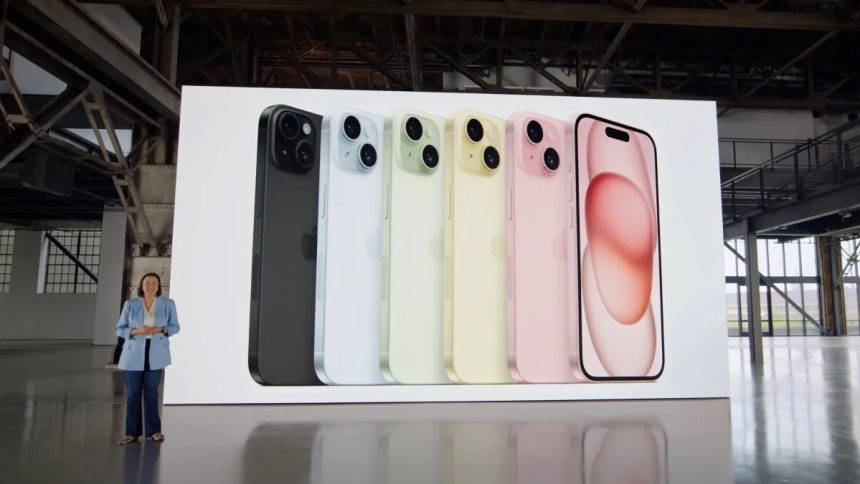Delhi : Apple products have always been a great attraction to people all around the globe. People wait for its new product launches. On September 9, the 16th series of iPhones was launched internationally. According to reports, Apple has added a few new features to the phone making it a bit different from the previous iPhone launches.
Four mobiles have been launched in the 16th series — iPhone 16, iPhone 16 Plus, iPhone 16 Pro, and iPhone 16 Pro Max. Before this Apple launched various laptops, smart watches and other gadgets which have gained popularity among people.
Let’s find out some of the facts about the first iPhone and its success.
Origin and Vision
The idea for the iPhone emerged from Steve Jobs, Apple’s co-founder and a visionary leader renowned for his relentless pursuit of innovation. By the early 2000s, Apple was riding high on the success of its iPod, but Jobs envisioned something far more ambitious. He imagined a device that could seamlessly combine the functionalities of a phone, a music player, and an internet browser into a single, elegant product. His goal was to move beyond physical keyboards and integrate a touch interface, which he believed would offer a more intuitive and versatile user experience.
Development challenges
The path from concept to reality was laden with obstacles. Tony Fadell, often dubbed the ‘Godfather’ of the iPod, was instrumental in the iPhone’s development. Initially, Fadell focused on enhancing the iPod, but his work led to the realization that touch-screen technology could be more effectively utilized in a phone.
A notable incident during development involved Fadell losing a prototype of the iPhone during air travel. The prototype was fortunately found between seats on the plane, underscoring both the high stakes and occasional luck involved in the project.
Internally, Apple faced significant debate about the design of the iPhone. There was contention over whether to include a physical keyboard or rely solely on a touch screen. Jobs, a staunch advocate for the touch-screen interface, faced resistance from some team members. In a dramatic turn, he famously told the team that those opposed to the touch screen should leave. This decisive leadership ensured the project stayed on course and led to the groundbreaking design that would define the iPhone.
The Unveiling
On January 9, 2007, Steve Jobs introduced the iPhone at the Macworld Expo in San Francisco. Despite the skepticism from critics who questioned the device’s practicality and its $399 price tag, the iPhone’s innovative features quickly won over consumers. It combined a 3.5-inch touchscreen with a 2-megapixel camera, 16 GB of storage, and integrated the functions of a phone, an iPod, and an internet browser.
The initial model set new benchmarks in mobile technology, from its intuitive user interface to its sleek design. Jobs’ unveiling was a turning point that set the stage for a new era in smartphones.
Apple has launched 25 types of iPhones so far:
– The first iPhone in 2007
– iPhone 3G in 2008
– iPhone 3GS in 2009
– iPhone 4 in 2010
– iPhone 4S in 2011
– iPhone 5 in 2012
– iPhone 5S in 2013
– iPhone 5c in 2013
– iPhones 6 and 6 Plus in 2014
– iPhone 6S and 6S Plus in 2015
– iPhone SE in 2016
– iPhones 7 and 7 Plus in 2016
– iPhones 8 and 8 Plus in 2017
– iPhone X in 2017
– iPhone XS and XS Max in 2018
– iPhone XR in 2018
– iPhone 11 series in 2019
– iPhone se in 2020
– iPhone 12 mini in 2020
– iPhone 12 series in 2020
– iPhone 13 series in 2021
– iPhone SE 3rd Gen in 2022
– iPhone 14 series in 2022
– iPhone 15 series in 2023
-iPhone 16 series in 2024
Impact and Evolution
The iPhone’s impact was immediate and transformative. It set a new standard for smartphones and influenced the development of mobile technology worldwide. The device’s success led to the creation of the App Store, which revolutionized how software was distributed and consumed, and sparked a wave of innovation in mobile applications.
Since its debut, the iPhone has evolved through numerous iterations, each introducing new features and enhancements. From improved camera systems and faster processors to advancements in screen technology and beyond, Apple has continually pushed the envelope of what a smartphone can achieve.
A Lasting legacy
The success of the iPhone can be attributed to Steve Jobs’ vision, Tony Fadell’s technical expertise, and the collective efforts of Apple’s talented team. The iPhone’s introduction marked a significant shift in the tech industry, influencing not only the development of smartphones but also the broader landscape of consumer electronics.
Today, Apple continues to innovate with new iPhone models, including the recent iPhone 15 and the upcoming iPhone 16 series. Each iteration builds on the legacy of the original iPhone, showcasing Apple’s commitment to pushing the boundaries of technology and user experience.







